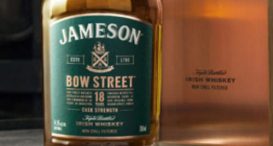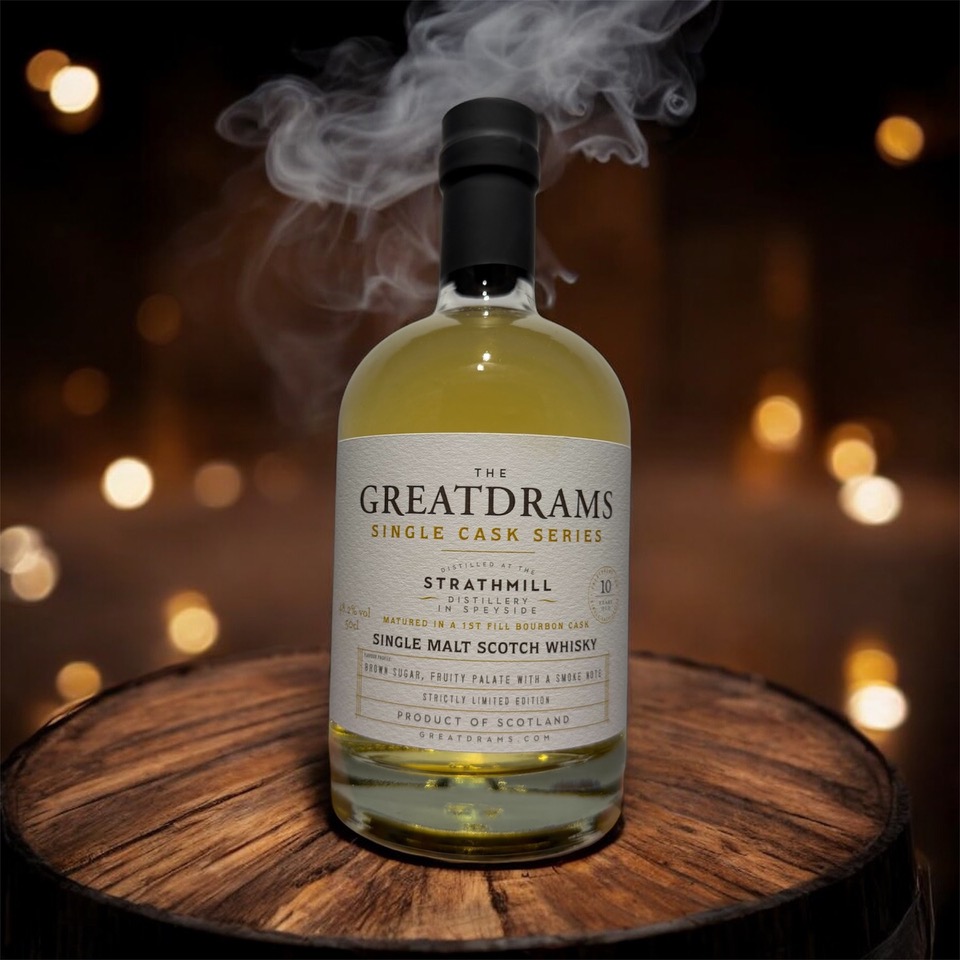Focus on the whisky process: Distillation
let’s begin
One of the key parts in the Whisky making process, distillation is where the alcohol created during fermentation is removed from the wash to form a concentrated liquid that goes on to be matured into Whisky.
Scotch is distilled twice and in some places, three times, although this is more commonly done in Ireland.
First Distillation
The wash from fermentation is poured into stills that are heated with steam. This can be done in two ways. The first is in a pot still, which acts as a large kettle that is heated.
Alcohol boils at a lower temperature than water, and therefore will evaporate first.
As the still is heated the alcohol evaporates and is separated off into another container called a condenser through the swan neck of the still. In the condenser, constantly running cold water turns the vapour back into liquid.
In a column still, the wash is trickled down a series of plates, with steam rising up the opposite direction. The steam heats the alcohol as it goes and it evaporates off.
Traditionally stills have been heated with a direct flame from a wood, coal or gas burning fire. These days it is more likely to be done through steam that is piped into coils at the base of the still.
Some distilleries still use gas fires, including, Glenfarclas, Glenfiddich, Macallan and Springbank.
Direct heat has its downsides however, as it is not as consistent as steam and can create hot spots that burn the wash.
This can either create a burnt flavour or encourage the production of more roasted, sulphur notes.
The stills have small glass windows that allow the distiller to watch the process, ensuring that the wash does not boil over or foam too much.
Foam is more likely to be created from a wash that has only been fermented for a short period of time.
This foam carries solids that will spoil the liquid in the condenser should the get into it, so it is important for the distiller to keep a close eye on the process.
The distiller is able to control the amount of foam produced by reducing the heat and maintaining the level of foam at a certain point. The longer the distillation goes on for the less chances of the foam boiling over.
In this first distillation, lasting around 6 hours, the alcohol and some water is separated from the solids and liquids of the wash. The result is called low wines, which are at an ABV of around 21-30%.
These low wines must be distilled again as there are still some compounds present that are not desirable in the final product.
Second Distillation
The second distillation creates an even more concentrated liquid as more water is removed. There is no chance of frothing either as there are no solids in the liquid.
The distiller must be sure of when to stop distillation, as different flavour compounds boil at different levels. This is called “making the cut”.
The ABV of the liquid that comes out after the second distillation is around 70%, with some distilleries such as Auchentoshan and Hazelburn going on to distill a third time.
Making the Cut
In order to assess whether the liquid can be cut or not, the distiller must look at the run of the liquid that has been produced.
This is done through a spirit safe, a small metal box where the distillate can be viewed.
The first to arrive in the spirit safe are the “heads” or foreshots. These are compounds with a low boiling point such as methanol, acetaldehyde and some ethyl esters.
These are elements that must be removed, for various reasons such as being unhealthy or unpleasant to taste. These are moved to another container called a feints receiver.
Next to go through the spirit safe are the hearts of the wash. This is the bit that the distiller wants to preserve, as it will go on to make up the new make spirit that is then matured.
The distiller is able to manipulate the route of this spirit and directs it into a Intermediate Spirit Receiver.
After this comes the tails of the spirit, which is similar to the heads, as in they are undesirable. Again, the distiller is able to redirect their path and move them into a separate container from the hearts.
The distiller must know when to cut the spirit, or in other words, when to change the speed of the running spirit and when to start separate each different element of the liquid.
This is what it means to make the cut.
Congeners
There are some elements in the foreshots and feints that contribute a pleasant and desirable flavour to Whisky.
The distiller must be able to discern when it is time to make the cut and still allow some of these flavours into the mx, without spoiling the taste with the other bad elements.
Some of the foreshots contribute sweet, fruity and citrus notes while the heavier, oily feints contribute smoky notes. In between these there is a more floral and grassy taste.
The point at which the distiller makes the cut will determine the overall texture of the Whisky, whether it is light of heavy. The earlier it is cut, the lighter it is and vice versa.
Heavily peated Whiskies are more likely to be cut later, as the feints contain a lot of smoky notes and phenols.
The foreshots arrive in the mix at around 75% ABV and the feints at 62-65% ABV, but this can vary greatly from distiller to distiller.
Traditionally the distiller also used thermometers and hydrometers to know when to make the cut. In modern days there are many different electronic machines to aid the distiller in his decision.
With each distillation the spirit becomes lighter and as such, Whisky that is distilled a third time is usually very light in taste.
The feints are often run until there is only 1% ABV. The liquid left after this will then be discarded or sprayed over fields.
The low wines and feints will be run again into the next distillation.
In some cases, the ISR can contribute to a certain wax like note in the new make spirit and as such it will not be fully emptied or cleaned, in order to preserve this waxiness.
Striking a balance
Many distilleries are designed in such a way that the machinery matches up in terms of volume.
This means that the volume of the wash created in the washback will be enough to fill one still, or two small stills.
This creates a balance in the distilling process, which creates efficiency. If a distillery is not balanced in this way, it can take a lot of time to sync up both the cycles of the washbacks and the stills.
copper
Most stills are made from copper and for good reason too. Copper reacts with the alcohol vapour in such a way that it creates compounds and filters others.
In the case of sulphur, which is harmful to have in the final Whisky product, copper reacts with this and creates copper sulphate.
This is a harmless compound that is easily filtered out and appears as green filtration in the spirit safe.
It also removes cyanides, acids and carbonates and the more acidic the wash the better the copper reacts. Stills are often allowed to air between distillations as a way to allow air to circulate and restore the active processes of copper to a normal level before they start again.
This means that every dimension of the still will play a big part in the overall flavour of the Whisky.
Speed also plays a part in copper contact. The distiller can decide whether to speed up distillation or not, with a slower distillation resulting in more copper contact and therefore a lighter spirit.
Still shapes
There are three main types of still shape; plain neck, boil ball (try saying that three times fast!) and lamp glass.
Boil balls are the most commonly used for wash stills and will add a hint of pine to the spirit. Lamp glasses have a tapered waist, which allows the vapour to hit off it and run down to be vaporised again.
As such there is more contact between the copper and the vapour. This is called reflux and results in a lighter spirit.
The height of a still effects flavour as reflux will also take place if the neck is long enough.
After the neck of the still there is a device called a lyne arm that will sometimes include a purifier. This device will be cooled or uncooled and allows some of the heavier elements to be condensed and for reflux to occur when they are returned into the still via a pipe.
Distilleries that have uncooled purifiers in the lyne arms include Ardbeg, Strathmill, Talisker, Glen Spey, Glenlossie and Tormore
Glen Grant has purifiers on both its wash stills and spirit stills and is the only distillery to have this.
Condensers
There are two types of condensers. These machines are used to cool the vapour and turn it back into liquid spirit.
The first is the shell and tube condenser. This is a series of around 100 copper tubes that are cooled with continuously flowing water. The vapour is run through the tubes where it reverts back to liquid form due to the cooling effect of the water.
These are usually housed within the still house itself, but some are installed outside.
Worm tubs, which sound pretty strange but are actually a lot less gross, are large wooden tubs with a copper tube coiled around the inside. This is why they are called worm tubs.
These are kept on the outside of the still house and are topped up with cold water that is pumped into the base. The warm water is then removed from the top.
The diameter of the copper tube inside the tub gradually decreases and the distillate is removed at the bottom, where the tube runs into a spirit safe.
Worm tubs do not offer a lot of copper contact and therefore create heavier and richer drams. They were first invented in Germany in 1540 and were the most widely used condensers I Scotland until the invention of the shell and tube in the 1880s.
Shell and tube condenser are now the most widely used and only fifteen distilleries, Royal Lochnagar, Edradour, Speyburn, Glen Kinchie, Balmenich, Talisker, Benrinnes, Cragganmore, Dalwhinnie, Craigellachie, Glen Elgin, Springbank, Pulteney, Mortlach and Oban, continue to use worm tubs.













3 thoughts on “Focus on the whisky process: Distillation”